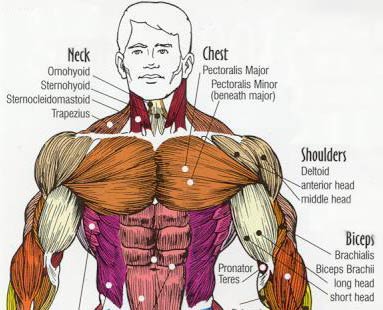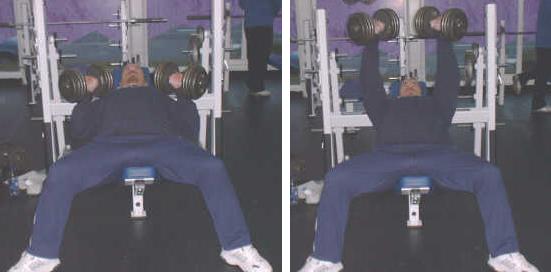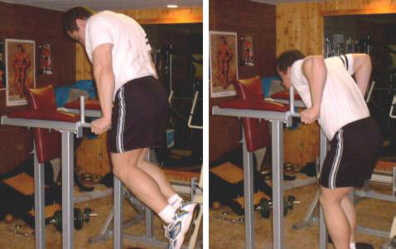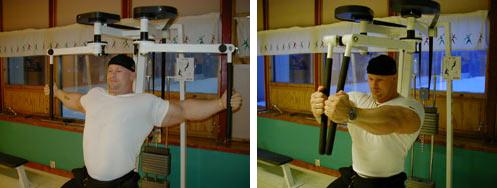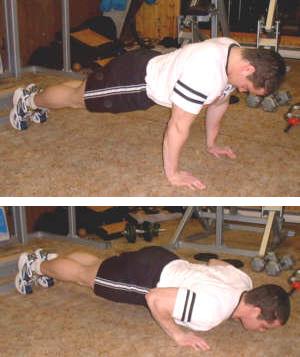Rules of the Road:
Navigating the New Ethics of Local Journalism
Keynote Address: Oppenheimer Ethics Symposium
Statehouse Auditorium, Boise, Idaho
Oct. 20, 2011
Thank you for having me and thanks to Douglas and Skip Oppenheimer and
the many other media and civic sponsors of this symposium.
I come to you today filled with a lot of optimism. This is an exciting
time for journalism. It is being re-invented before our very eyes, day
in and day out.
People are not only re-imagining how to make news and information, they
are acting on their ideas: They are launching news websites, new
partnerships, new apps, data libraries, and new ways of engaging with
audiences. And they are figuring out new rules for these activities. The
way the journalism ecosystem is currently evolving, the future of
journalism – and the democracy it supports – is becoming a tale of
smaller and smaller organizations that are having bigger and bigger
impact. Some of the traditional news organizations that have been around
for decades will be gone. Rising in their place are small news
start-ups, statewide investigative sites, nonprofit news sites, new data
applications, journalism-school news initiatives, and information-rich
NGOs.
J-Lab, my center, has been in the forefront of jumpstarting some 90
pilot projects, including about 70 news sites around the country. And I
am pleased to report that most of these new efforts are doing a quite a
responsible j¬ob of trying to fill the gaps in news coverage and
watchdog public officials. To be sure, they don't yet have the resources
to replace everything that is being cut back. And their long-term
sustainability is still uncertain.
But the rise of these smaller news outlets has planted a variety of
novel minefields in journalism's ethical landscape. The rules for
stepping around these minefields don’t always lend themselves to the
hard-and-fast do's and don'ts that helped establish a fairly
straight-and-narrow path for the journalism of old and gave us things
like the SPJ Code of Ethics.
For one thing, there are all kinds of new people – not just
professional journalists – creating content and much of that content has
a lot of journalistic DNA. They include so-called civic catalysts,
community volunteers, creative technologists, computer programmers,
nonprofit groups, and what I call "soft advocates."
What do I mean by "soft advocates"? I mean news sites like the
Catalyst in Chicago or the Public School Notebook in Philadelphia that
are doing real journalism on local school districts, but they also have a
point of view. They are very much rooting for good public schools.
In addition to new people producing news, there are also new
definitions of news that differ from how we traditionally defined a news
story in the past. In particular, some of the people who are launching
news sites never got the memo that conflict is a common element of many
news stories. And, horrifying as it might be to traditional
journalists, some will go cover a town meeting and report what happened
in chronological order. Interestingly, readers don't seem to mind.
Finally, there are new kinds of content, including citizen
contributions, social-media input, crowd-sourced information and
something called "sponsored content." More on that in a minute.
And, of course, the ethical issues around the impact of search engines
has made many journalists pause before they act. If one of the ethical
aspirations of journalists is to do less harm, we must be mindful that
every news items – from Big-J to Small-J journalism – has a forever
afterlife in the Google cloud.
Watching all this happen, I saw an opportunity to start a conversation
about ethics in the new ecosphere. I got a grant from the Ethics &
Excellence in Journalism Foundation and hired Scott Rosenberg, a
co-founder of Salon and recently named editor-in-chief of Grist
magazine. I gave him some topics to probe and sent him off to report. He
delivered really authentic exploration of actual dilemmas some of
these news entrepreneurs are confronting. We published it as "Rules of
the Road, Navigating the New Ethics of Local Journalism". To be sure, we
know this field is very much a work in progress.
The dilemmas, however, offer a great window into an emerging journalism landscape that is being shaped by these new realities:
• The threshold for news is lower – whether you are CNN or a hyperlocal
news site. Misdemeanors, not just felonies, constitute news. And
incremental developments are the scooplets that news outlets now crow
about.
• Stories unravel in real time. Editors post updates as they come in rather than wait for a fully baked story.
o A post on a local news site might read: We hear there is an accident at 3rd and Main Streets. What do you know about it?
• “Google juice” makes micro news have a macro afterlife in search engines.
• Ethical decisions are as open to community feedback and comments as the stories themselves.
• Attachment to the community is valued more than dispassionate detachment.
• Traditional notions of objectivity are bumping up against aspirations to advocate for the good of the community.
The pioneers of new local news sites are grappling with the tensions
between running a business and serving the public, between telling
collective truths and protecting individual privacy, and between
witnessing events – and even sponsoring events – and advocating causes.
The good news is that most entrepreneurial news startups are embracing
traditional values of professional journalism – accuracy, fairness,
independence – while engaging in seat-of-the-pants improvisation.
In some cases, I would assert that they have stricter ethical guidelines than many mainstream news organizations.
For these journalistic pioneers, you will hear little about issues of
political candidates' keeping their personal lives private or about
suppressing the news at the request of public officials.
When plagiarism surfaces – as it did last week with the case of
Politico reporter Kendra Marr, who resigned after reports of
similarities between her stories and reports published elsewhere,
including the New York Times – it ignited a conversation in an Online
Journalism Review article about how the speed of web journalism is
creating a "breeding ground for ethical lapses."
Instead, here a taste of some of the new dilemmas:
Photos: Journalists traditionally have been concerned about whether
photos were too shocking or gruesome to be published. Now, for some
local news sites, photos are tied to questions of invasion of privacy.
Consider this: You might rush to photograph a traffic fatality and have
it online long before next-of-kin are notified, as Howard Owens, founder
of TheBatavian.com in Batavia, N.Y, did a while ago.
His photo of the car that had a passenger who died clearly showed the
license plate. He recounts in “Rules of the Road” what happened:
"I got blasted by a reader whose daughter drives the same kind of car
with a license plate that also begins with the same three letters. She
called her daughter in a panic," he said.
But when the lady sitting next to that woman saw the photo, she was
devastated. She wasn't a member of the immediate family, but she knew
whose car it was.
So, Owens' epiphany? "Maybe in the future, I need to be mindful of
obscuring the license plate, or just waiting another couple of hours,"
he said.
Fairness: Too few voters have a good sense of candidates running for
local offices. At best, they might get a biographical paragraph or two
in a local voters guide. Many voters say they don’t feel they have
enough information to cast a ballot.
So what if one candidate buys an ad on your news site, and his
challenger doesn't? Do you turn down all political ads, just to even the
playing field? Do you compensate by going out of your way to cover the
candidate who did NOT advertise? How do you avoid perceptions that you
are not favoring the candidate who DID advertise?
This was the conundrum for Glenn Burkins, founder of QCityMetro.com in
Charlotte, N.C. (also known as the Queen City): "Every time I sat down
to write about that campaign, I knew in the back of my mind that one
candidate had given me money and the other one hadn't. And I didn't
like that at all. I can honestly say that I didn't do anything different
because of that. But out in the community, I heard speculation that I
was favoring the Republican."
Police arrests: Some of the most serious ethical minefields involve daily police-blotter information.
It used to be that a police story to made the newspaper or the nightly
newscast if it was a felony. The crime was significant: Somebody died
or did the killing. Weapons, force, fires, mayhem or missing persons
would register as news.
In the emerging local news ecosystem, simple misdemeanors can make the
threshold for news – particularly in smaller news outlets. So we are
talking about domestic disputes, driving a car under the influence of
alcohol, teenage drinking, even an 18-year-old involved with a
17-year-old could be classified as a sex offender.
Some news outlets publish all the names of people arrested in a community. Some even run the mugshots on their websites.
A few entrepreneurs feel their readers have a right to know what kinds
of police activities their taxes are funding. They view this making the
conduct of public officials more transparent.
But many of the site publishers we interviewed are adopting a stricter
standard, even if their local newspaper doesn’t. They are saying: Wait a
minute: What if the charges don't stick? Or the person is not
convicted? What if the police got it wrong? If we can't follow every
case through the courts, they say, we don't want to report it.
Some site editors may report an incident, like speeding on Main Street,
but without a name. Others draw the line at only reporting crimes of
significance. Still others won't report the names of anyone under 18,
even if their competitors do.
"You really have a responsibility to follow cases through the court
system," says David Boraks, founder of DavidsonNews.net in North
Carolina. "And what the heck, I'm not going to follow all the speeding
tickets."
Said Liz George, one of the co-editors of Baristanet.com in Montclair,
N.J.: “We do really have a lot of Google power, and we don't want to use
it to ruin somebody's life."
Business and Advertising: The digital age is fundamentally
transforming how journalists finance their projects. It's important for
new startups to be sustainable, and it's also critical that they
maintain the public's trust.
Most startups are supporting themselves by getting grants or donations,
selling ads or sponsorships, by holding events, syndicating content,
and sometimes by doing web and social-media consulting for businesses in
their community.
Nearly all have very clear rules barring pay to play. But it's
difficult when the same person wears two hats: where you are the
journalist as well as the ad sales person. Small advertisers in
communities sometimes expect that they can buy an ad in exchange for a
story.
But most news sites say they won't forfeit credibility or independence
for a few hundred dollars. (And thank goodness most of the ads on their
sites don’t cost much more than that.)
You're not going to ignore a story about an advertiser if it's
important to the community, but you are not going to shill for your
advertiser, they said. Says Baristanet's Liz George: "That's the
decision you make all the time editorially: When it is story-worthy and
when is it crossing the line?"
Sometimes sponsors will fund reporting on niche topics, like education,
health or the environment and site publishers work to be transparent,
much like NPR, about those sponsorships.
Site publishers are also employing some creative ways to tell readers:
"And now a word from our sponsors." To finesse publishing something on
their website from a sponsor, they might tweet it out or put it on their
Facebook page.
Site operators have to work very hard both at being transparent and educating their advertisers and readers about support.
Commenting: To know or not to know the identity of who is posting
comments on your site is an area where site operators disagree. Some
site operators are fine with anonymous comments and leave it to the
community to alert them if people are posting inappropriate or offensive
comments.
Others will only post comments after they moderate them first to ensure
civil discourse. And still others require people who post comments to
identify themselves, either by name or email address. In truth, this is a
more stringent policy than many mainstream media sites have.
Scott Lewis, CEO of the six-year-old VoiceofSanDiego.org, says that
over time they developed a policy requiring people to disclose their
full names to comment on the site and all comments are pre-reviewed:
"Search engines tend to pick up comments as if they were content on
their own, and if you have something there that is an out-and-out
falsehood … it'll be there in the record, somebody will come across it
and cite it somewhere."
Objectivity: The notion of creating balanced, impartial accounts has
long been steeped in the ethos of journalism. But the conventions of he
said/she said journalism or scorecard journalism – who's up and who's
down today – seem to hold less value to the readers of some of the
journalism startups. Moreover, the journalists who are starting up these
enterprises usually have lived in the community for a number of years
and bring to their enterprise a rich historical knowledge of community
people and issues – often more knowledgeable than a new reporter just
starting out on a newspaper.
Indeed, in an age when the value of information is enhanced by informed
perspectives and interpretations, we find news entrepreneurs embracing
positions that advocate for the good of the community. Now this would
make traditional journalists squirm with discomfort. But many of the
journalism entrepreneurs want their news sites to be OF the community,
not just about the community. They want to create community, not just
cover it. And key to this is engaging their community in very active
ways.
So they may sponsor a float in the 4th of July parade, hold community
events, crowd-source developing news stories, and advocate for building
good communities.
Says Lance Knobel, one of the founders of Berkeleyside.com in
California: "We don't have to pretend to be neutral about having a
healthy business community in Berkeley."
"If we can do anything to make Telegraph Avenue less crappy, I don't
see that as abandoning our position above the fray. I see that as we've
done something great for the city we live and work in."
So, in summing up, I think you'll agree that looking at evolving
ethical decisions is a good way to chart where the journalism of our
future is heading.
I'll never forget how Maureen Mann described one of her challenges
after she helped to launch The Forum in Deerfield, N.H., in 2005. It is
one of the startups J-Lab helped to fund.
At times she said, a volunteer reporter for the site would cover a town
meeting and they'd get a call the next day from a public official
complaining – not that they were misquoted – but that a story quoted
what they said, but what they said was a clumsy rendering of what they
meant. Ordinary people seldom speak in perfect sound bites and many
traditional journalists relish such missteps. Indeed, they will quote
them for decades.
Mann, however, said she said she learned to create some space, and some
transparency, to let her readers know when a public official wanted to
clarity what he meant.
It's inconceivable to me that a mainstream news outlet would allow that.
Doing less harm is a fundamental credo of the Society of Professional Journalists' Code of Ethics.
From my perch, I think many of the digital journalists occupying the
new journalism landscape are working hard to do less harm while holding
their communities accountable.
I draw great optimism from that.
Thank you very much.








.png)







 Are
you curious? Are you good with words and can you spell and punctuate?
Can you construct an argument and convey information and emotion with
words? Are you flexible and adaptable? Can you write on almost anything?
Is it important to you to keep up with current events? Are you
interested in other people’s lives? Are you persistent and willing to
dig for information?
Are
you curious? Are you good with words and can you spell and punctuate?
Can you construct an argument and convey information and emotion with
words? Are you flexible and adaptable? Can you write on almost anything?
Is it important to you to keep up with current events? Are you
interested in other people’s lives? Are you persistent and willing to
dig for information?.png)
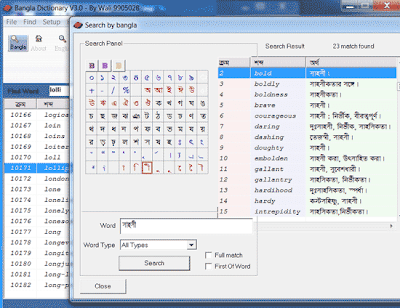
.png)


